New technology helps create sustainable spaces
New technological developments within the architecture and construction industry are allowing Gloucester-based Roberts Limbrick to create more sustainable buildings than ever.
Roberts Limbrick is a practice that focuses on sustainability. It believes good environmental design can improve user experience and reduce greenhouse gas emissions and whole lifecycle cost. These elements are considered a holistic part of the design process and Roberts Limbrick collaborates with specialists to ensure its buildings are well designed and comfortable.
Joe Roberts
Joe Roberts, director, said: “Set in the context of a climate emergency, sustainability is a fundamental factor of design and business in the 21st century. As a practice, we believe it is time for architects to step up and take greater responsibility for the spaces we live, work and socialise in. We continue to embed sustainability at the heart of our business activities and seek to create buildings that are both sustainable and improve people’s lives.”
Working in this way means as many sustainable elements as possible are put into designs, employing technology and techniques aimed at enhancing energy efficiency and resource conservation. Technology such as rainwater collection, air source heat pumps and HVAC systems have been popular client requests, giving the practice a wealth of experience incorporating these systems into its designs.
Careful use of space is just as important, and Roberts Limbrick implements this through strategies such as green roofs in projects like Cirencester College’s Gloucestershire Applied Digital Skills Centre and the Hartcliffe apartment buildings in Bristol.
BREEAM is one of the leading sustainable standards within architecture, with ratings from Outstanding to Acceptable. To date, Roberts Limbrick has been involved with many buildings which have strong environmental credentials. These include buildings that have BREEAM Outstanding, Excellent and Very Good ratings. The firm’s own offices were designed to achieve BREEAM Excellent.
Spirax-Sarco Engineering plc
Roberts Limbrick was appointed to replace the current extension at Spirax-Sarco Engineering plc’s Group HQ with a contemporary, four-storey headquarters office that remained sympathetic to the adjoining Grade II listed building and was fully in line with the group’s One Planet: Engineering with Purpose sustainability objectives.
The firm strived to make the design as sustainable as possible, and the building has been accredited with BREEAM Outstanding at design stage. This rating recognises the top 0.5% of sustainable new builds and is the highest rating BREEAM offers. An energy-efficient building will be achieved with features such as solar glass, heat pump technology, photo voltaic array and materials reused from the demolished structure.
The redevelopment of the building offers an opportunity to enhance the outdoor space and create a haven for nature to thrive, in line with the group’s focus on biodiversity. New trees, planting beds and a wildflower garden will also help to improve the biodiversity of the site. Further ecological enhancements will include a wildlife pond, bat and bird boxes, hibernacula and an insect hotel.
Carnival Leisure Centre
Sustainability in the sport and leisure industry is of great importance. Creating a sustainable building provides users of the facilities with a more positive and uplifting environment.
The client for Carnival Leisure Centre was Wokingham Borough Council, which prepared a climate emergency action plan in 2019, prompting Roberts Limbrick’s involvement in the project.
Roberts Limbrick was appointed for its specialist sport and leisure experience and to make sure the project stayed on track. The firm redesigned and delivered an accessible and inclusive leisure centre, which met and exceeded Sport England design guidance, while retaining the sport, leisure, library and community facilities, working with Pellikaan Construction.
Sustainable features, such as photovoltaic panels and air source heat pumps, were incorporated and the thermal fabric was significantly improved. This saw an 87% reduction in CO2/ m2 in operation. The building is one of the country’s most energy-efficient leisure centres and received a BREEAM Very Good rating.

Carnival Leisure Centre
Forest of Dean Campus
Educational facilities are one of the most vital places to implement sustainable architecture. Making sure sustainability is at the forefront of students’ minds while they are learning, through the architecture around them, can help shape sustainable futures.
Roberts Limbrick was brought in by Gloucestershire College to design a new, highly sustainable campus for the Forest of Dean. The college required flexible, futureproof facilities, which could be shared by students and the community.
The building is situated on a site of national ecological importance populated by bats, newts and dormice. This meant that every stage of development needed to be extremely sensitive to the surroundings and, through targeted consultation and working with ecologists, Roberts Limbrick reduced the ecological impact of the campus on the site.
The sustainable building design is orientated to provide high levels of natural light and uses the existing site contours to minimise the impact of the facility on the landscape. It incorporates brown and green roofs to provide habitats for wildlife, along with greywater rainwater harvesting and roof-mounted solar panels.
Future
Roberts Limbrick has been placing a huge focus on sustainability within architecture for many years. The firm’s architects understand the importance of looking towards the future when designing.
Source: Punchline







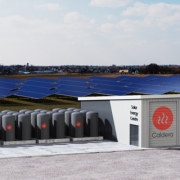

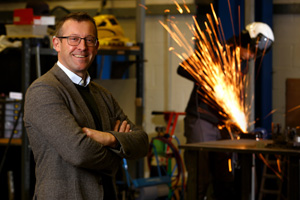


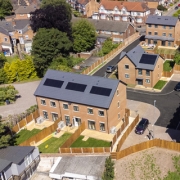
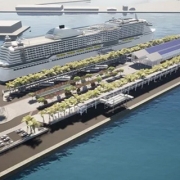
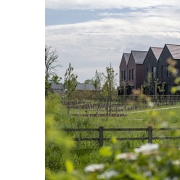
 By aligning to the Prime Minister’s recently announced net zero approach, the proposed measures would not add additional burdens on households, but instead drive energy efficiency in a way that lowers household bills. This desire to have greener, more sustainable homes was even more in evidence among the next generation of home owners and buyers, with 66% of those surveyed aged between 18 and 30 saying it would be willing to pay more for an environmentally friendly home.
By aligning to the Prime Minister’s recently announced net zero approach, the proposed measures would not add additional burdens on households, but instead drive energy efficiency in a way that lowers household bills. This desire to have greener, more sustainable homes was even more in evidence among the next generation of home owners and buyers, with 66% of those surveyed aged between 18 and 30 saying it would be willing to pay more for an environmentally friendly home.